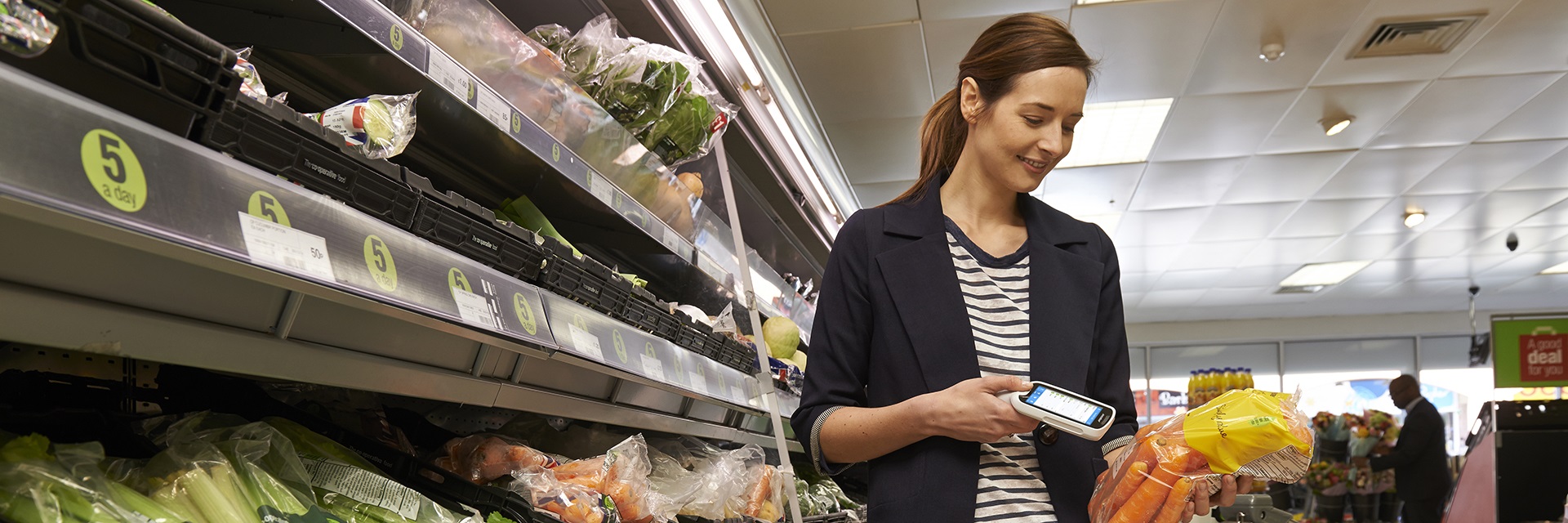
April 11, 2019 | MATT REDWOOD
Self-checkout has been around for 15 years—we’re all accustomed to seeing SCO point-of-sale terminals at the grocery store. Self-service has woven its way into so many of our daily activities, from paying for gas to checking into a flight.
Yet I think for many years, there’s been an oversimplification of self-service solutions. There has been an assumption that if SCO is installed, customers will use it, and the retailers will shave costs. This couldn’t be further from the truth. This year, as kiosks, scan-and-go devices , mobile loyalty apps and other shopping technology has all made its way into stores at a mainstream level, I’m finally seeing retailers start to understand and explore the entire spectrum of self-service. It’s way more than SCO—and it’s way more complex than simply swapping out teller terminals.
Lessons from the Early Days
Ubiquitous smartphone use has changed the way consumers engage with brands. Consumers are empowered to take their own journey through each shopping experience and transaction, all the way up to POS. We’re now at the stage where consumers are demanding more say in every aspect, whether they’re shopping online or in-store. In the U.S. for instance, 95% of consumers say they’ve encountered self-checkout in retail, and 49% say they use it on a daily basis. These are huge numbers, and multiplied across the globe, it’s massive.
But as retailers have begun to shift their focus to this end-to-end consumer journey, the old rip-and-replace mentality has begun to show some major cracks. Everything has to change when you shift to self-service—no matter what solution you employ. Your approach to cash management, the back office, the way your staff engages with customers, the layout on the front-end, all these elements of the brick-and-mortar store have to be addressed because it’s a business-change solution, not an incremental development. Unless retailers are willing to invest the soft costs of time, energy and top-down support, the adoption levels will not be there.
Here’s the thing: Early adopters saw SCO as a way to strip out costs and cut staff. On paper, it seemed like an obvious solution to make stores more efficient. But these early adopters found that the consumer experience went down the more they stripped the staff out.
Supporting the E2E Shopping Journey
Today, we’re talking about how we can make the front-end of the store as efficient as possible by taking process away from staff and giving it to customers. But unlike those early days, that doesn’t translate to a staff member who is going to lose their job, but instead to a staff member who could be redistributed to another part of the store, to be visible and help customers with their shopping experience.
The most value a staff member can deliver to your customers, in terms of the interaction with your brand, is in the aisles, helping customers with their shopping experience. Most consumers, when they get to checkout, just want to get out as quickly as possible, so a frictionless checkout that delivers the best experience becomes a real customer value.
This is the first year where I’ve started to see more retailers really “getting it” when it comes to this philosophical shift. They’re starting to bake self-service into their strategic plans. As they open new stores, they do so with a complete mentality change and a much more diverse approach to the customer experience and self-service. Now that in-store technology has passed through the early-adopter stage and become more mainstream, retailers are more frequently utilizing scan-while-you-shop tools (whether that’s in the form of a handheld personal scanner or an app on their mobile phone), loyalty apps that offer in-store coupons, kiosks that speed up the ordering process and POS terminals that can flex with foot traffic, operating as manned checkout stations or self-checkout depending on the store’s immediate needs. We’re seeing a much more blended checkout portfolio with retailers segmenting their customer types and providing specific solutions targeted at each one—offering a better in-store experience for more of their customers, as well as delivering a highly efficient store operating model.
Every store setting is unique; a QSR restaurant has very little to do with an upscale fashion retailer, and their self-service solutions won’t look the same either. But as we’ve seen this year, and I think we’ll continue to see moving forward, the very concept of self-service is expanding to meet the needs of a vastly different consumer base. SCO was just the beginning—and now we’re really beginning to see the possibilities for using a wide range of in-store self-service solutions to drive connected commerce across channels and silos, to facilitate the entire E2E shopping journey in new and innovative ways.
Interested in exploring how innovative self-service solutions could transform your retail environment? Connect with our retail experts today!
This article originally appeared on PYMNTS.com.